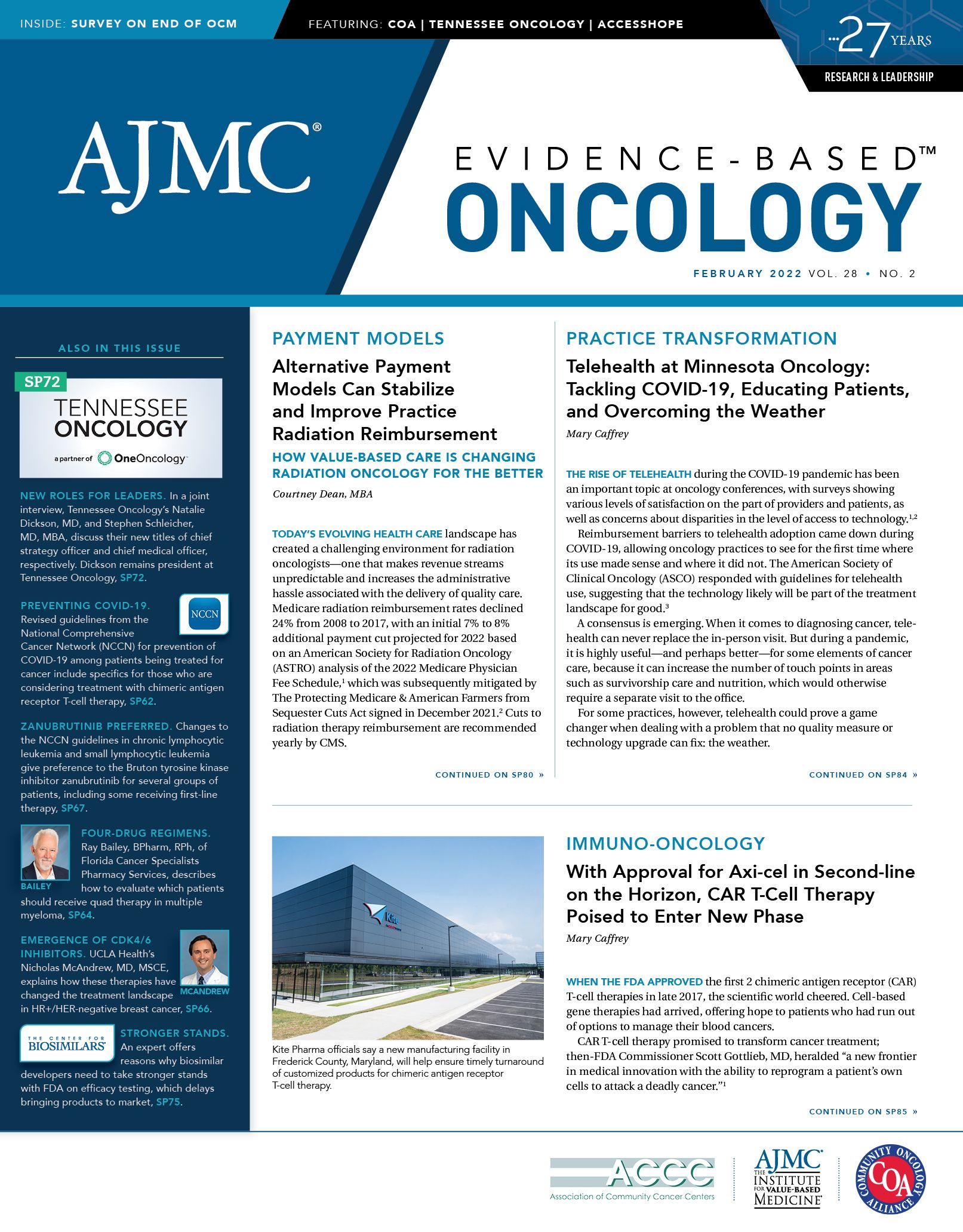- Center on Health Equity & Access
- Clinical
- Health Care Cost
- Health Care Delivery
- Insurance
- Policy
- Technology
- Value-Based Care
From the Editor-in-Chief: From the Earth to the Moon (and Back)
The president’s aim is a 50% reduction in age-adjusted cancer deaths by 2047. This goal seems audacious, but it is likely achievable.
On February 2, President Joseph R. Biden Jr. announced the next arc of the Cancer Moonshot initiative and emphasized key deliverables in the battle against cancer. He noted that advances in cancer care, including those in genomics, immuno-oncology, and targeted therapeutics, had resulted in a 25% reduction in cancer mortality over the past 25 years. Goals of the reinvigorated Cancer Moonshot include accelerated and broader deployment of screening, a renewed focus on improving the equity of care delivery and survival outcomes, and a reorganization of key governmental leaders to speed up success. The president’s aim is a 50% reduction in age-adjusted cancer deaths by 2047.1,2
These goals seem audacious, but they are likely achievable. The importance of early and effective systems for cancer screening cannot be overstated. The COVID-19 pandemic has exacerbated the issue of access to screening in unprecedented ways. Data from an Epic system analysis show that “screening appointments for breast, cervical, and colon cancers in March 2020 decreased between 86% and 94% compared with average volumes in the prior 3 years.”3 The administration’s focus on improving screening rates, especially in underserved communities, is likely to produce an outsized impact on cancer survival rates over the next 2 decades.
Reinforcing our new therapeutic pipeline is also an essential component of ensuring the Moonshot initiative’s success. Data show that some of the greatest recent improvements in cancer survival have occurred in cancer types that respond to advanced care technologies. Increasing the depth and diversity of our anticancer portfolio will empower countless cures and extraordinary progress in improving quality of life for patients with cancer.
In this issue of Evidence-Based Oncology™, we examine some of these new care technologies and their evolving role in improving outcomes. Mary Caffrey reviews the implications of the approval of chimeric antigen receptor T-cells as second-line treatment for relapsed and refractory aggressive non-Hodgkin lymphoma. In our interview with Nicholas McAndrew, MD, MSCE, a medical oncologist and breast cancer specialist at UCLA Health, we evaluate the use of CDK4/6 inhibitors in metastatic HR+/HER2-negative breast cancer.
Beyond technology, however, we cannot get onto a path toward better, more equitable care without creating systems that can deliver that care in more sustainable, patient-centered ways. In this issue, Stephen Schleicher, MD, MBA, discusses his new role at Tennessee Oncology that will focus on building systems of care that integrate palliative care and genetics counseling into a more patient-centered model. We also focus upon how to leverage models of telehealth to ensure continuity of cancer care in an era of COVID-19–related disruptions.
I believe that we are at the brink of realizing the promise of the Moonshot. That realization, however, will require that we bring our efforts down to earth. Discovery alone cannot ensure care equity absent ensuring that all patients, including the underserved, benefit from these advances. Ultimately, we cannot technologize our way to lower cancer mortality rates. We must ground these advances in the reality of the human experience. President Biden noted that, “Despite all the progress, there’s still a sense of powerlessness, guilt..., and fear.”1 Our systems and aspirations must ensure that the vulnerable person whom we are privileged to treat is at the center of our innovation and systems building. That is a challenge that lies here, back on earth: The place where lofty aspirations and high rhetoric must ultimately land if it is to succeed.
References
1. Remarks by President Biden at an event to reignite the Cancer Moonshot. The White House. February 2, 2022. Accessed February 3, 2022. https://www.whitehouse.gov/briefing-room/speeches-
remarks/2022/02/02/remarks-by-president-biden-at-an-event-to-reignite-the-cancer-moonshot/
2. Fact sheet: President Biden reignites Cancer Moonshot to end cancer as we know it. The White House. February 2, 2022. Accessed February 3, 2022. https://www.whitehouse.gov/briefing-room/statements-releases/2022/02/02/fact-sheet-president-biden-
reignites-cancer-moonshot-to-end-cancer-as-we-know-it/
3. Cavallo J. How delays in screening and early cancer diagnosis amid the COVID-19 pandemic may result in increased cancer mortality: a conversation with NCI Director Norman E. “Ned” Sharpless, MD. The ASCO Post. September 10, 2020. Accessed February 3, 2022. https://ascopost.com/issues/september-10-2020/how-delays-in-screening-and-early-cancer-diagnosis-amid-the-covid-19-
pandemic-may-result-in-increased-cancer-mortality/

